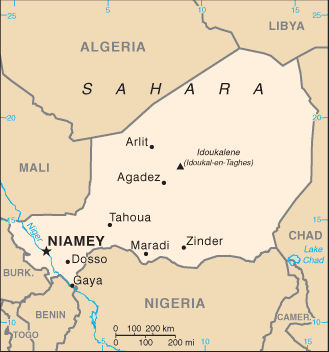In a follow-up on the hepatitis E outbreak in southeastern Niger, officials with the United Nations Office for the Coordination of Humanitarian Affairs (OCHA) reports (computer translated) the case count has risen to 664 suspected and confirmed cases in the Diffa region.

To date, at least 30 fatalities have been reported this year. Women are the population most affected accounting for 60 percent of the infections and pregnant women make up the bulk of the fatalities.
Hepatitis E infection is found worldwide. The virus is shed in the stools of infected persons, and enters the human body through the intestine. It is transmitted mainly through contaminated drinking water. Usually the infection is self-limiting and resolves within 2–6 weeks. Occasionally a serious disease, known as fulminant hepatitis (acute liver failure) develops, and a proportion of people with this disease can die.
According to WHO, every year, there are an estimated 20 million hepatitis E infections worldwide, leading to an estimated 3.3 million symptomatic cases of hepatitis E, and 56,600 hepatitis E-related deaths.
Related:
- Russia: Brucella outbreak, affecting humans and animals, reported in Voronezh region
- HIV: Pitt researchers develop test to detect ‘hidden’ virus
- Iran: CCHF deaths prompt emergency meeting
- Global experts recommend that people with HIV should be vaccinated against meningococcal disease
- Cholera: Yemen reports more than 50,000 cases in a month
- Guinea worm disease: 21 suspected cases in South Sudan

